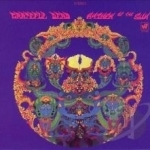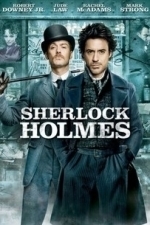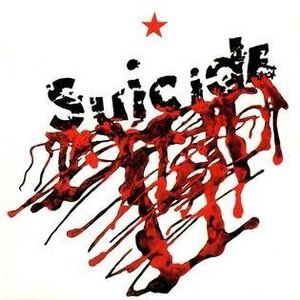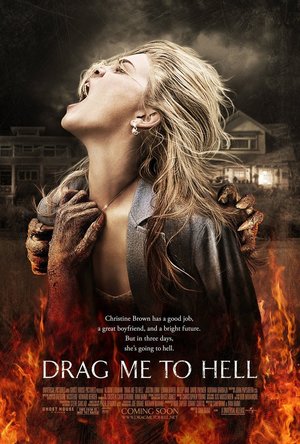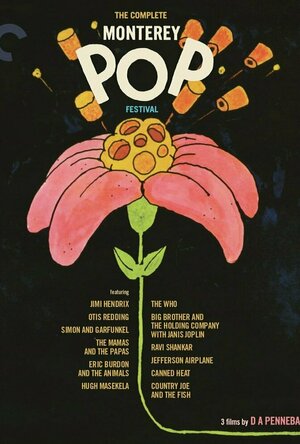Search
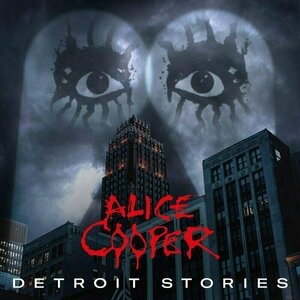
Detroit Stories by Alice Cooper
Album
Named for the city that launched the original Alice Cooper group on the road to success, “Detroit...
Lee Ronaldo recommended Anthem of the Sun by Grateful Dead in Music (curated)
Lyndsey Gollogly (2893 KP) rated Echoes of her Soul ( Soul Tenders book 2) in Books
Aug 23, 2022
152 of 230
Kindle
Echoes of her Soul (Soul Tenders book 2)
By Serena Lindahl
⭐️⭐️⭐️
🌶🌶🌶
Megreria is a Kingdom built upon order. Each citizen receives an assigned House based on a test of their skills and an assigned Soul Match, the other piece of their soul as seen by the mysterious Soul Tenders.
A week ago, Kiarra didn’t believe in Soul Matches and she couldn’t master any ability well enough to test into a House. When her beloved brother becomes a Soul Tender, the traumatic experience begins a chain of events which will challenge everything she has ever thought or believed. Kiarra has five Soul Matches and a Fate much greater than any House occupation. As she struggles to navigate the attention of five different men, she must also adjust to her new role in the Kingdom of Megreria. When she and her matches discover a diary written by a long dead ancestor, Kiarra realizes there is more at stake than just her own destiny. Her path will affect not only the future of their Kingdom, but other Kingdoms as well.
Join Kiarra, Mason, Ian, Sebastian, Clay and Reed as they discover their history, grow their soul bonds, and struggle to defeat an evil force intent on destroying everything and everyone they love.
It was ok! So the first book I admired the strength in the story and how they didn’t rush the main character into mad sex scenes with her 5 chosen men (although we are only about a week or two in lol) Then in this one we have 50% of the book all angsty and sexual tension, to so many discussions and then a full on orgy!! I mean full on. I was grateful for the not over analysing of it after but it then left 2 chapters of the remaining story and action to develop which felt so rushed. Now I understand why the author needed to develop the characters relationship but it seemed drawn out a touch. Overall it was an ok book but I just wasn’t feeling overly happy with it by the end.
Kindle
Echoes of her Soul (Soul Tenders book 2)
By Serena Lindahl
⭐️⭐️⭐️
🌶🌶🌶
Megreria is a Kingdom built upon order. Each citizen receives an assigned House based on a test of their skills and an assigned Soul Match, the other piece of their soul as seen by the mysterious Soul Tenders.
A week ago, Kiarra didn’t believe in Soul Matches and she couldn’t master any ability well enough to test into a House. When her beloved brother becomes a Soul Tender, the traumatic experience begins a chain of events which will challenge everything she has ever thought or believed. Kiarra has five Soul Matches and a Fate much greater than any House occupation. As she struggles to navigate the attention of five different men, she must also adjust to her new role in the Kingdom of Megreria. When she and her matches discover a diary written by a long dead ancestor, Kiarra realizes there is more at stake than just her own destiny. Her path will affect not only the future of their Kingdom, but other Kingdoms as well.
Join Kiarra, Mason, Ian, Sebastian, Clay and Reed as they discover their history, grow their soul bonds, and struggle to defeat an evil force intent on destroying everything and everyone they love.
It was ok! So the first book I admired the strength in the story and how they didn’t rush the main character into mad sex scenes with her 5 chosen men (although we are only about a week or two in lol) Then in this one we have 50% of the book all angsty and sexual tension, to so many discussions and then a full on orgy!! I mean full on. I was grateful for the not over analysing of it after but it then left 2 chapters of the remaining story and action to develop which felt so rushed. Now I understand why the author needed to develop the characters relationship but it seemed drawn out a touch. Overall it was an ok book but I just wasn’t feeling overly happy with it by the end.
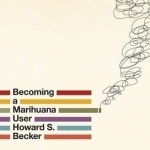
Becoming a Marihuana User
Book
OG Kush. Sour Diesel. Wax, shatter, and vapes. Marijuana has come a long way since its seedy days in...
Whatchareadin (174 KP) rated The Underwriting in Books
Apr 9, 2019
Hook is the hottest new dating app. It's location based and as long as two users match each other they can "hook" up in a matter of minutes.
Jost Hart, Hook's creator, believes it's time to follow in the steps of Facebook and other apps and take his public. He enlist Todd Kent with L.Cecil to help with the IPO. Todd barely knows Josh, having just met him briefly at a strip club months before, but is grateful for the opportunity seeing the potential in the app since he is one of it's users.
Kelly Jacobsen is also a Hook user, one of about 500 million. She has just accepted a position at L.Cecil after interning there over the summer. Now, back at Stanford, she reaches out to Tara Taylor, her mentor during the internship, letting her know of the decision. Tara is very excited for Kelly, this along with being named as part of the IPO team for Hook is really making her week. But after making this decision and spending a night out with friends, the next day, Kelly is found dead, with a drug overdose as the explanation. Her friends and family are baffled by this as this is something she would never do.
The death of a young co-ed and the introduction of a new company going public. Could these events be related in any way? Could Hook somehow be involved with Kelly's untimely demise? As the buzz for the IPO grows so does the speculation of the security of the app and it's users.
With so many changes happening so quickly, what will be the outcome? This book is filled with sex, lies, and billions of dollars, never a great combination when dealing with murder!
When first reading this book I was shocked at the number of different characters introduced so quickly. The book was fast paced from the start. ou meet the team of L.Cecil bankers in charge of the underwriting. From the guy at the top, to the little-a analyst who is crunching all of the numbers. You meet the guys in Silicon Valley from the creator of the app, to the engineers, that help to keep it running.
Everyone has their own agenda in this deal. To be bigger, better, and more powerful than before. And with billions of dollars on the table, the deal would do just that. This was an intriguing book, that thoroughly kept my attention. After reading one night I had very vivid dream about the book. I was sitting at the table with everyone, trying to make the deal work. It was a bit crazy for me. There are parts of this book that leave you with your mouth hanging open as you can't believe what you just read.
Jost Hart, Hook's creator, believes it's time to follow in the steps of Facebook and other apps and take his public. He enlist Todd Kent with L.Cecil to help with the IPO. Todd barely knows Josh, having just met him briefly at a strip club months before, but is grateful for the opportunity seeing the potential in the app since he is one of it's users.
Kelly Jacobsen is also a Hook user, one of about 500 million. She has just accepted a position at L.Cecil after interning there over the summer. Now, back at Stanford, she reaches out to Tara Taylor, her mentor during the internship, letting her know of the decision. Tara is very excited for Kelly, this along with being named as part of the IPO team for Hook is really making her week. But after making this decision and spending a night out with friends, the next day, Kelly is found dead, with a drug overdose as the explanation. Her friends and family are baffled by this as this is something she would never do.
The death of a young co-ed and the introduction of a new company going public. Could these events be related in any way? Could Hook somehow be involved with Kelly's untimely demise? As the buzz for the IPO grows so does the speculation of the security of the app and it's users.
With so many changes happening so quickly, what will be the outcome? This book is filled with sex, lies, and billions of dollars, never a great combination when dealing with murder!
When first reading this book I was shocked at the number of different characters introduced so quickly. The book was fast paced from the start. ou meet the team of L.Cecil bankers in charge of the underwriting. From the guy at the top, to the little-a analyst who is crunching all of the numbers. You meet the guys in Silicon Valley from the creator of the app, to the engineers, that help to keep it running.
Everyone has their own agenda in this deal. To be bigger, better, and more powerful than before. And with billions of dollars on the table, the deal would do just that. This was an intriguing book, that thoroughly kept my attention. After reading one night I had very vivid dream about the book. I was sitting at the table with everyone, trying to make the deal work. It was a bit crazy for me. There are parts of this book that leave you with your mouth hanging open as you can't believe what you just read.
Gareth von Kallenbach (980 KP) rated Sherlock Holmes (2009) in Movies
Aug 8, 2019
The stories of master detective Sherlock Holmes have delighted readers, listeners, and viewers for well over a century. The tales have grown from the stories by Sir Arthur Conan Doyle to include radio, television, and film. Director Guy Ritchie casts Robert Downey Jr. as a slightly dysfunctional but brilliant Holmes who, along with his partner Dr. Watson (Jude Law), have just stopped a bizarre ceremony and ended a murder spree in the process.
The people of London are grateful to be free of the terror induced by Lord Blackwood (Mark Strong), but solving the mystery leaves Holmes somewhat despondent and uninterested in solving other mysteries. Most likely because Watson is moving out of their home and office to complete his pending marriage plans. The lack of complexity in the cases Holmes is requested to take leaves him abundant time to sulk in his study and scare the housing staff with his bizarre behavior and inventions.
The monotony of Holmes’s life is abruptly ended when Blackwood summons him shortly before his scheduled execution for his crimes. Blackwood indicates that a dark plot is in the works and though his claims are dismissed by the authorities as the desperate ravings of a madman about to be executed, Holmes begins to think there is more to the case than meets the eye. Things take a bizarre turn when Blackwood appears to rise from the dead and starts a new wave of terror over the city. Pressed into action, Holmes and Watson uncover a series of clues that reveal a diabolic plot that will alter the balance of power in England.
In a race against time, Holmes and Watson must also deal with their unresolved issues regarding Watson’s pending marriage as well as a mysterious, seductive woman from Holmes’s past (Rachel Mc Adams). What follows is a winning combination of comedy, action, mystery, and a touch of romance Ritchie knows he has a strong cast and gives Downey, Law, and Mc Adams ample room to explore their characters yet keeps them within the story.
The plot of the film may be the weakest point and at times its uncertain if it is an action buddy film or a caper picture. It attempts to blend the two but often comes up short, lacking enough action for my taste. The plot may also be confusing to some as it lacks a cohesive structure and seems to be a free roaming entity that exists within a general framework.
Downey and Law work well with one another and Downey gives a strong, clever performance in a role that requires both physical and cerebral dexterity. Mc Adams is good as the love interest in the film but would have benefited from more time to better expand her character which I hope will happen in future films.
While the film may not come across as a traditional American studio film, there is a lot to like about this new Holmes and the new franchise it launches for fans old and new.
The people of London are grateful to be free of the terror induced by Lord Blackwood (Mark Strong), but solving the mystery leaves Holmes somewhat despondent and uninterested in solving other mysteries. Most likely because Watson is moving out of their home and office to complete his pending marriage plans. The lack of complexity in the cases Holmes is requested to take leaves him abundant time to sulk in his study and scare the housing staff with his bizarre behavior and inventions.
The monotony of Holmes’s life is abruptly ended when Blackwood summons him shortly before his scheduled execution for his crimes. Blackwood indicates that a dark plot is in the works and though his claims are dismissed by the authorities as the desperate ravings of a madman about to be executed, Holmes begins to think there is more to the case than meets the eye. Things take a bizarre turn when Blackwood appears to rise from the dead and starts a new wave of terror over the city. Pressed into action, Holmes and Watson uncover a series of clues that reveal a diabolic plot that will alter the balance of power in England.
In a race against time, Holmes and Watson must also deal with their unresolved issues regarding Watson’s pending marriage as well as a mysterious, seductive woman from Holmes’s past (Rachel Mc Adams). What follows is a winning combination of comedy, action, mystery, and a touch of romance Ritchie knows he has a strong cast and gives Downey, Law, and Mc Adams ample room to explore their characters yet keeps them within the story.
The plot of the film may be the weakest point and at times its uncertain if it is an action buddy film or a caper picture. It attempts to blend the two but often comes up short, lacking enough action for my taste. The plot may also be confusing to some as it lacks a cohesive structure and seems to be a free roaming entity that exists within a general framework.
Downey and Law work well with one another and Downey gives a strong, clever performance in a role that requires both physical and cerebral dexterity. Mc Adams is good as the love interest in the film but would have benefited from more time to better expand her character which I hope will happen in future films.
While the film may not come across as a traditional American studio film, there is a lot to like about this new Holmes and the new franchise it launches for fans old and new.
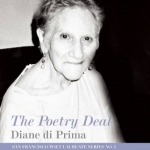
The Poetry Deal
Book
"The Poetry Deal: San Francisco Poet Laureate Series No. 5 gives us di Prima's vision as she looks...
Gareth von Kallenbach (980 KP) rated Drag Me to Hell (2009) in Movies
Aug 14, 2019
I’m just going to be honest. Drag Me To Hell is the movie we would have seen 22 years ago had Sam Raimi been given several million dollars, had Bruce Campbell been a woman and had there been no chainsaws handy. Not that this is a bad thing. I believe that Raimi fans will be quite pleased to see the cult and blockbuster director’s return to his roots.
Christine Brown (Alison Lohman) is a soft-spoken loan officer competing for the open position of assistant manager at the bank branch she works for. She has a predominantly sunny life with her boyfriend, Clay Dalton, (Justin Long) and a new kitten.
When an old woman in an Oldsmobile (Lorna Raver) comes to beg for an extension on her mortgage, Christine is unaware of how much her ideal life is about to change.
Desperate to impress her boss and prove her prowess over the only other candidate, Christine refuses the woman help. Angered and shamed, the woman curses Christine, calling upon the demon Lamia (voiced by Art Kimbro) to torment her for three days and then damn her soul.
Acting upon the advice of a Seer (Dileep Rao), Christine struggles to free herself from this terrible fate. She alienates herself from Clay’s parents, sacrifices her cat, participates in a séance, crashes a funeral, defiles the dead and is eventually forced to choose whether or not she can in turn damn her business rival.
But I wouldn’t want you to start thinking that you’re dealing with some far-too-serious classic horror revival (not that that would be a bad thing). Let’s not forget the projectile blood and vomit, the mud and maggots, the stapler to the face and ruler to the back of the throat; all done in that comical slapstick that only Raimi can produce. The utterly gory, disgusting images that make you laugh hysterically while simultaneously cringeing in disbelief. This is the stuff that made him a cult hero.
There are certainly some creepy moments, quite a few in fact. Things that pleased the horror fan in me very much. And there are plenty of scares to be had as creatures and characters launch themselves from the shadows. I only jumped a couple of times (and I scare easily) but that might have been due more to the people sitting around us than the movie itself.
Drag Me To Hell opens with a classic Universal logo, one that hasn’t been seen since the 70s. It was so appropriate that as soon as I saw it I was sure I was going to walk away happy. Then the opening credits began and I was blown away. They are so absolutely gorgeous that they almost deserve to be a short of their own rather than find themselves pinned to a feature. The special effects continue to be a remarkable strong point throughout the rest of the movie. Several scenes blew me away with their execution and look.
When it comes down to what was missing, characterization was the one thing this film lacked. I didn’t feel very connected to any of the characters and certainly didn’t care about their plight. It seemed rather two dimensional. The characters are barely introduced and we aren’t ushered into their lives and minds before the action begins. We are just expected to care.
On top of this, Lohman’s acting wasn’t the greatest and Long, while doing a decent job, didn’t seem to fit the role terribly well. The cat-sacrificing didn’t go far for making me feel any sympathy toward Christine or her dilemma. This was all very disappointing since I feel as though everything else was so strong that had this been reinforced rather than left flat it would have been exceedingly excellent.
But it is worth a watch. If you love anything by Sam Raimi you will not be disappointed and if you’ve never seen any of his work then you might find yourself pleasantly surprised. This is one of the few things I have ever watched that was exactly what it promised to be.
Thank you, Mr. Raimi, for this excellent return to horror. We are all grateful.
Christine Brown (Alison Lohman) is a soft-spoken loan officer competing for the open position of assistant manager at the bank branch she works for. She has a predominantly sunny life with her boyfriend, Clay Dalton, (Justin Long) and a new kitten.
When an old woman in an Oldsmobile (Lorna Raver) comes to beg for an extension on her mortgage, Christine is unaware of how much her ideal life is about to change.
Desperate to impress her boss and prove her prowess over the only other candidate, Christine refuses the woman help. Angered and shamed, the woman curses Christine, calling upon the demon Lamia (voiced by Art Kimbro) to torment her for three days and then damn her soul.
Acting upon the advice of a Seer (Dileep Rao), Christine struggles to free herself from this terrible fate. She alienates herself from Clay’s parents, sacrifices her cat, participates in a séance, crashes a funeral, defiles the dead and is eventually forced to choose whether or not she can in turn damn her business rival.
But I wouldn’t want you to start thinking that you’re dealing with some far-too-serious classic horror revival (not that that would be a bad thing). Let’s not forget the projectile blood and vomit, the mud and maggots, the stapler to the face and ruler to the back of the throat; all done in that comical slapstick that only Raimi can produce. The utterly gory, disgusting images that make you laugh hysterically while simultaneously cringeing in disbelief. This is the stuff that made him a cult hero.
There are certainly some creepy moments, quite a few in fact. Things that pleased the horror fan in me very much. And there are plenty of scares to be had as creatures and characters launch themselves from the shadows. I only jumped a couple of times (and I scare easily) but that might have been due more to the people sitting around us than the movie itself.
Drag Me To Hell opens with a classic Universal logo, one that hasn’t been seen since the 70s. It was so appropriate that as soon as I saw it I was sure I was going to walk away happy. Then the opening credits began and I was blown away. They are so absolutely gorgeous that they almost deserve to be a short of their own rather than find themselves pinned to a feature. The special effects continue to be a remarkable strong point throughout the rest of the movie. Several scenes blew me away with their execution and look.
When it comes down to what was missing, characterization was the one thing this film lacked. I didn’t feel very connected to any of the characters and certainly didn’t care about their plight. It seemed rather two dimensional. The characters are barely introduced and we aren’t ushered into their lives and minds before the action begins. We are just expected to care.
On top of this, Lohman’s acting wasn’t the greatest and Long, while doing a decent job, didn’t seem to fit the role terribly well. The cat-sacrificing didn’t go far for making me feel any sympathy toward Christine or her dilemma. This was all very disappointing since I feel as though everything else was so strong that had this been reinforced rather than left flat it would have been exceedingly excellent.
But it is worth a watch. If you love anything by Sam Raimi you will not be disappointed and if you’ve never seen any of his work then you might find yourself pleasantly surprised. This is one of the few things I have ever watched that was exactly what it promised to be.
Thank you, Mr. Raimi, for this excellent return to horror. We are all grateful.
